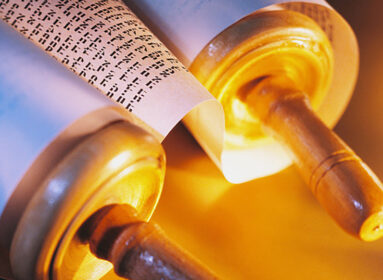
By Rabbi Tzvi Hersh Weinreb
In this week’s Torah portion, Balak (Numbers 22:2-25:9), the Torah itself provides with information about two Ancient Near East cultures with which our ancestors were confronted in the very opening stages of our history. I refer, of course, to Moab and Midian.
It also introduces us to a “culture hero,” possibly “the most prominent public intellectual of his time, Balaam son of Beor in Pethor, which is by the Euphrates.” I believe the Torah does this to impress upon us that the Jewish people, even while still in the desert, lived in a cultural context and not in isolation. Moreover, the Torah teaches us a bit about the nature of those cultures, with which its own teachings stand in stark contrast.
By far, the larger section of this week’s Torah portion is devoted to Balaam: to his personal character, his eloquence, and surprisingly, even to his theology.
That Balaam was a “major player” in the Ancient Near East is attested to not only in the Torah text we read this Shabbat, but in the texts of the remnants of other ancient cultures. Hence, we read on a fragmentary inscription on wall plaster (dated to the late 9th to 8th century B.C.E.) from a temple at Deir Alla in what is today Jordan, which records the night vision of a certain Balaam! The seer described in this precious relic bears the same name and patronymic as the Balaam in our Torah portion. Pethor is identified by archeologists as a site on the Sajur River in Aram (today, Syria) some 400 miles from Moab. All of this is important context for the message of our parsha.
What is that message? It is that even in the Ancient Near East, there were forces antagonistic to our people, our belief system, and our morality. Furthermore, these forces were, in many ways, amazingly similar to some of the forces we face today.
What are some aspects of Balaam’s mindset that may typify a philosophy prevalent in the Ancient Near East but which are equally common nowadays? Let’s begin with his willingness to sell himself and his services for the right price.
Balaam, we have seen, lived hundreds of miles from Moab. He himself was not at all endangered by the Israelites as they marched towards the Promised Land and posed a threat to trespass Moab’s territory. Indeed, his first response to Balak’s emissaries was a negative one.
But soon we see that he was really just playing “hard to get.” I rephrase what he said so that it sounds more like the language of so many contemporary politicians: “I have principles that I will not compromise. That is, I will not compromise except for the right price.” Once the client ups the ante, the principles are abandoned and off he marches hand in hand with his new client, ready to comply with the client’s wishes.
Our sages, in Ethics of the Fathers (5:23), impress us with their ability to reduce Balaam’s entire character into three concise phrases: “Whoever possesses these three qualities is a disciple of the wicked Balaam: an evil eye, a haughty spirit, and mighty desires.”
In other words, Baalam’s special “assets” were envy, arrogance and lust; certainly not an uncommon triad of attributes among the politicians of our time.
Even more insightful is the observation made in the Talmud, which discovers the secret of Balaam’s ability to place a curse upon others. The Talmud tells us that he was somehow able to calculate the one precise moment in the day when the Almighty, compassionate at all other times, was wrathful. I understand this to mean that Balaam was able to separate out the aspects of the deity that, taken out of the context of God’s mercy, looked very much like violent anger. He was able to use religion as an excuse for violence.
In this regard, he could easily find company in modern times, when so many are able to ignore the abundant religious teachings of peace and tolerance and instead use religion as an excuse for hatred and harmful acts. The correlation between religion and violence is one that critics of religion use well on behalf of their cause. That correlation, to the extent that it is true, is directly attributable to the ability of some religious extremists to “calculate the fleeting moment of God’s wrath,” to ignore the 99.9% of the Lord’s day and dwell upon the microsecond in which His anger flares.
To fully appreciate the Torah’s important messages, one must come to know against whom and against what they are aimed. The Torah elaborates at great length upon the figure of Balaam because he represents what was most objectionable in the Ancient Near East.
But the Torah is eternal, and all that it teaches in opposition to the prevalent culture of ancient times is equally relevant in modern times. Man’s dark side has not changed. Neither have the Torah’s lessons of light.








 Southern New England Jewish Ledger
Southern New England Jewish Ledger









